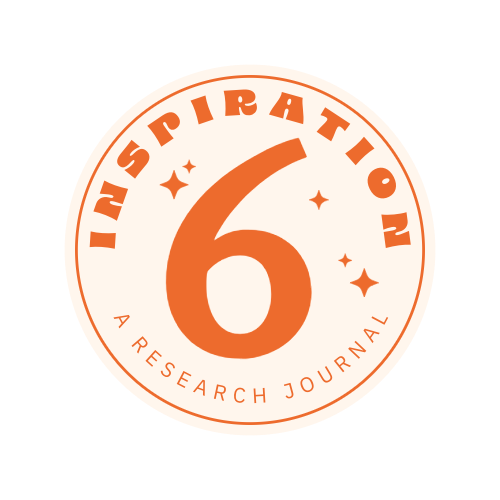When do you feel most inspired?
Some of your answers might be:
While I am on vacation.
When I am looking at a beautiful sunset.
At a once-in-a-lifetime music festival.
But what if I told you your daily routine might be the most essential way to foster creativity?
This may sound counterintuitive, as it’s common to feel more creative when you break away from routine, such as going on vacation or taking a new route home from work. While YES, going on a trip to a beautiful destination is undoubtedly inspiring, it’s not the kind of inspiration that sticks with us once we return home.
When nurturing inspiration for creative projects (especially if those projects are part of your livelihood), creating a daily habit around your work might be the best thing for you.

Cultivate Your Inspiration
I have mentioned a few times in this research journal that it is essential to cultivate inspiration. To cultivate inspiration, you must be intentional about what you choose to let in and influence your creative process. But what exactly does ‘cultivating inspiration’ look like?
One way to cultivate inspiration is to create and maintain daily routines that support and enhance your creative process.
Structured habits can significantly boost creativity and prevent burnout. Individuals develop heightened awareness and receptivity to inspiration by consistently engaging in creative work. Why does it seem so easy for the brilliant Jessica Walsh to create stunning ad campaigns? Because she gets up and goes to work every day.
Rituals and Routines
Rituals and routines prime the mind for creative endeavors, helping to sustain and amplify inspiration over time. This approach ensures consistent progress and leverages the power of habit to create freedom and focus for more exciting and productive creative work.
“The power of ritual, personal or collective, is common to many focusing styles. The ancient Greek poet asks the Muse for insight. . .the scientist reviews the data and frames the most appropriate question. . .the artist prepares [their] physical and psychological space and directs [their] energies toward a project” (Hart 1998: 29)1
While our approach to rituals has changed over time, Hart suggests that rituals serve as a universal mechanism for enhancing concentration, fostering creativity, and achieving optimal performance in various domains of creative human endeavor.
In his book Daily Rituals, Mason Currey chronicles numerous examples illustrating how renowned figures carve out time for inspiration and productive work. Currey explores the transformative potential of routines, questioning whether establishing a baseline of daily comfort serves as a prerequisite for sustained creative endeavors. Figures like Benjamin Franklin, Gertrude Stein, and T.S. Eliot exemplify how creative visions manifest through small daily increments, underscoring the profound influence of one's working habits on creative output.
Old Habits Die Hard
(So make sure to make good ones!)
Some individuals, such as W.H. Auden, took their adherence to routine to an extreme. Auden regarded a meticulously structured life as indispensable to his creativity, viewing it as a means of exerting control over the creative process and “a way of taming the muse to his schedule.” 2
While having such structured activity may seem like a total buzzkill to some creatives, creating good habits and routines has been proven to free our minds to do more exciting work and allocate attention to other tasks. James Clear, author of Atomic Habits, describes good habits as creating a system that your life can adhere to, with the ultimate purpose of solving life's problems with as little energy as possible. Clear recognizes that some people think such structure will dull their lives, taking the vibrancy and spontaneity out of life, while the opposite is true: “Habits do not restrict freedom. They create it.” 3
Considering all this evidence, starting the creative process only when inspiration hits is like waiting for a burst of motivation that may never come. By establishing a structured routine, you may find the ability and availability to foster a conducive environment for inspiration to flourish.
[ If you have been reading this series, you know I reference this guy a lot ] HART, Tobin. 1998. “Inspiration: Exploring the Experience and Its Meaning.” Journal of Humanistic Psychology 38(8), 7–35.
CURREY, Mason. 2013. Daily Rituals: How Artists Work. Knopf.
CLEAR, James. 2018. Atomic Habits: The Life-Changing Million-Copy #1 Bestseller. Random House.






What? Routine & habits as a pathway to creativity - this means all my happy places are converging!!! 😍